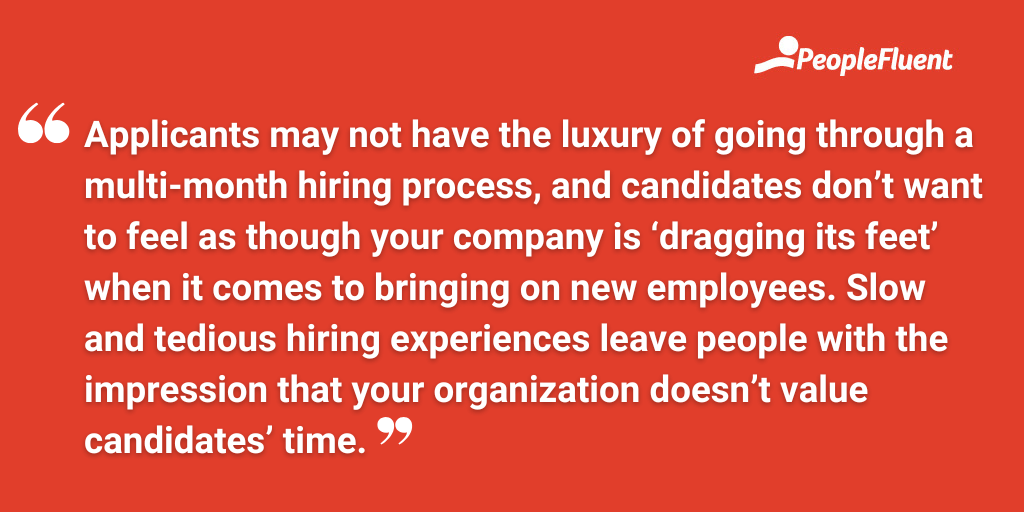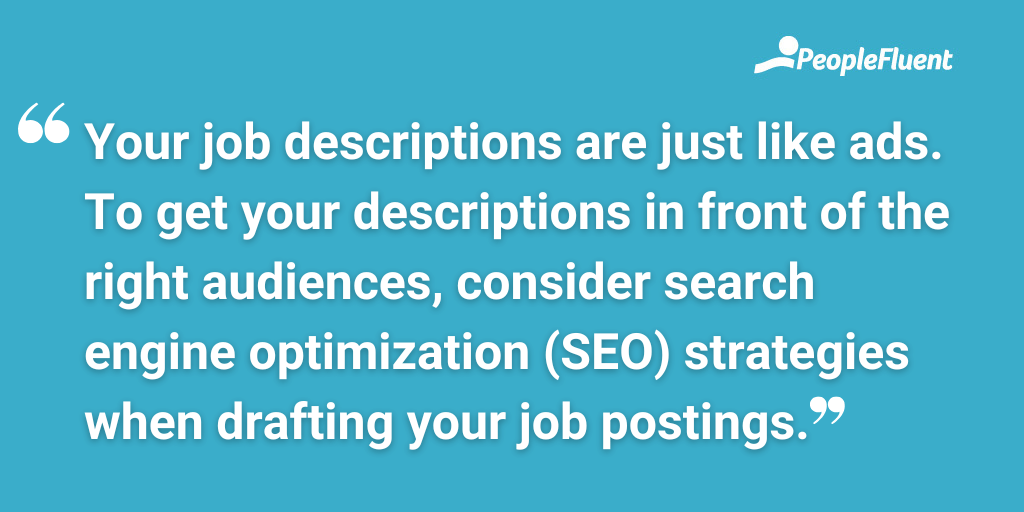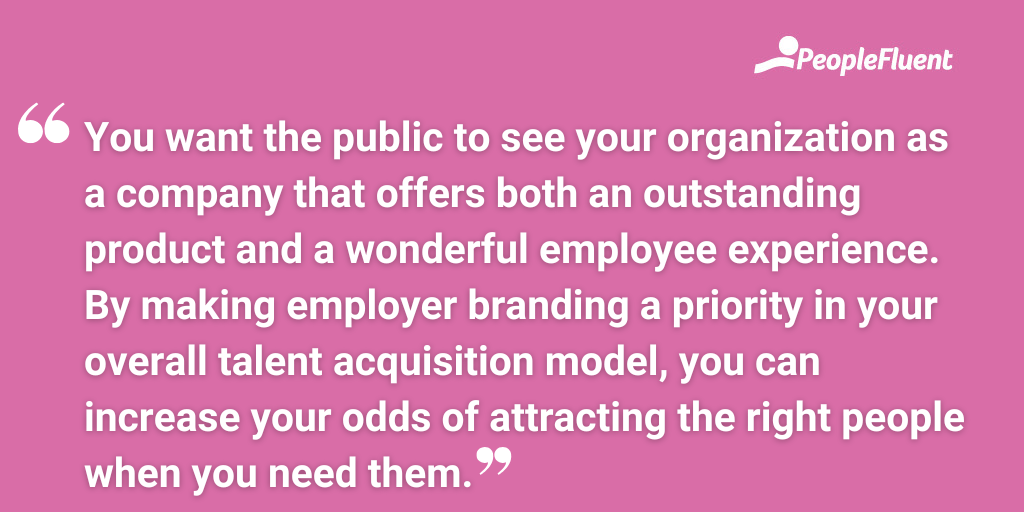Published: Aug 15, 2023Time to read: 7mins Category: Insights
5 Steps to Optimize Your Recruiting Efforts With Employer Branding
When it comes to attracting top talent, a strategic approach to employer branding can set you apart from other companies vying for the best applicants. While your organization might be easily recognizable to consumers, that doesn’t necessarily mean that potential employees have a clear understanding of what it’d be like to work for you. Many companies believe having a fantastic consumer brand automatically translates to strong employer branding. That’s simply not the case.
Consumer branding doesn’t give jobseekers any unique insights into your company’s values or culture. Potential employees want to understand what it would be like to work for your company and whether your mission aligns with their desires. Unfortunately, your marketing campaigns about your products and services won’t give job seekers the insight they crave.
At its core, employer branding means garnering awareness among the public that your organization is a great place to work. The easiest way to show potential candidates what you have to offer is through strong employer branding. It’s a dynamic process that should evolve with your organization’s culture and values over time.
1) Start Defining Your Employer Brand
Successful employer branding boils down to answering four essential questions:
- What is your brand story?
- How can you share your story with potential applicants?
- Where can you share your story so it reaches the right audiences?
- Why do people want to work at your company?
How you answer each question will be the blueprint for defining your employer brand strategy. Answering the what question is straightforward enough. This is your opportunity to describe your company’s mission and values, enabling job seekers to decide immediately whether your organization aligns with their professional goals.
However, answering the rest of the crucial questions will require a strategic approach.

ATTRACT TOP TALENT TO YOUR ORGANIZATION | ‘How Data Insights Lead to More Efficient Recruiting Processes’
2) Tell Your Brand Story
Your company’s story needs to stand out from your competitors and motivate would-be employees to apply for open positions. Since research shows 92% of job seekers who begin applying for a role choose not to finish their applications, your applicant tracking system (ATS) needs to embody your mission and values while improving the hiring processes for applicants.
Clear and transparent job descriptions are the first step in showcasing your values. You need to find the balance between giving too much information and not enough. Like everyone else, job seekers are pressed for time. Lengthy job descriptions can “turn off” some candidates and cause them to move on to other opportunities. Likewise, job descriptions that are too brief can leave people wondering if they’re qualified for the position or whether their goals will align with your company’s needs.
Your recruiting software also needs to employ a simple, mobile-friendly application process. Mobile accessibility can broaden your applicant pool since not everyone has a computer or tablet at their fingertips. A mobile-friendly application process also makes it easier for people to apply for positions at their convenience, which in turn sends the message that your organization cares about accommodating its people.
Another way to share your brand story through your recruiting platform is by streamlining your hiring process. Applicants may not have the luxury of going through a multi-month hiring process, and candidates don’t want to feel as though your company is “dragging its feet” when it comes to bringing on new employees. Slow and tedious hiring experiences leave people with the impression that your organization doesn’t value candidates’ time.
Instead, avoid that feeling by using an ATS that can automatically send applicants updates on the recruitment process, as well as streamline interview scheduling and hiring decisions.

READ MORE ON TALENT ACQUISITION | ‘Choosing Your Next Enterprise ATS: 4 Must-Have Features’
3) Share Your Brand Story
Once you’ve established what your story is and how you plan to tell it, the next step is to determine where you’ll share it. Think about talent acquisition as being similar to an ad campaign. Recruiters are marketing their organizations to prospective employees, so it’s important to think about where these potential candidates will find your job postings.
It’s not enough to publish your openings on the “Careers” section of your website and call it a day. Instead, you need to get those positions where applicants are likely to be searching. Google, LinkedIn, and other professional networking channels are great places to start.
Your job descriptions are just like ads. To get your descriptions in front of the right audiences, consider search engine optimization (SEO) strategies when drafting your job postings. In other words, don’t leave this task solely up to hiring managers or your legal department. Candidates want to feel as if the person doing the work wrote the job description, not the legal team. Make sure you also get input from someone within your organization who has SEO experience—probably from your marketing department. This person can offer guidance on how to improve your chances of getting job descriptions to the right candidates.
4) Demonstrate the Benefits of Working for Your Company
Once you get applicants to your career site, it’s time to showcase what your organization has to offer. People who make it to your career site are likely intrigued by your job openings and are trying to discern whether your organization will be a good fit for their personal goals.
Your career site should be able to answer the following questions:
- How do you support employees?
- How do you help employees achieve positive work-life balance?
- What is your organizational culture?
- Do you offer on-site, remote, or flexible/hybrid working models?
- What makes your organization’s location attractive for employees and their families?
- What opportunities are available for employees to learn and grow in their careers?
How you answer these questions will depend on the structure of your career site. Whether an applicant is brand-new to your company or has been on the payroll for years, your career portal will tell them a lot about your organization’s attitude toward its workers. Employees want to know they’ll be valued and respected by their employers. Investing in a configurable recruitment software allows you to manage multiple career sites that cater to your various audiences.
Your career portal is your first chance to impress applicants and convey how you’ll value them once they’re part of your team. Having the flexibility to design career portals that give specific groups of candidates the answers they need can improve your chances of getting high-quality applicants in your talent pools.

RELATED READING | ‘Highly Configurable & Candidate-Friendly: Why You (And Your Applicants) Win With PeopleFluent Recruiting’
5) Revisit Your Employer Branding Strategy
Like your consumer marketing plans, you’ll need to revisit and revise your employer branding strategy over time. Employee wants and needs will change. The things that encourage and drive top talent today won’t necessarily be the same five years from now.
It’s essential to stay agile and be ready to adapt your strategy when necessary. You want the public to see your organization as a company that offers both an outstanding product and a wonderful employee experience. By making employer branding a priority in your overall talent acquisition model, you can increase your odds of attracting the right people when you need them.
Discover the Full Potential of Employer Branding
Ready to learn more? Download our ebook, ‘How Employer Branding Impacts Your Talent Acquisition Strategy,’ or request an ATS demo today.